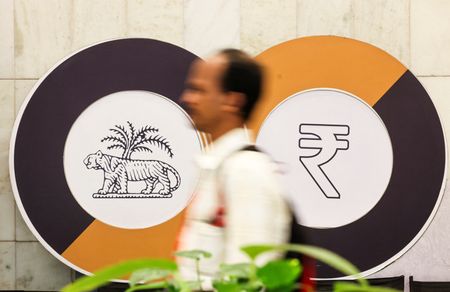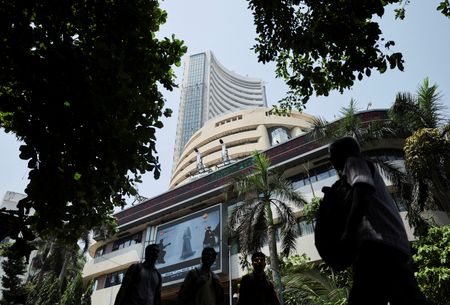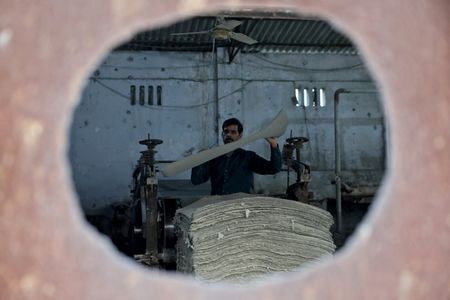By Nimesh Vora
MUMBAI (Reuters) -The Reserve Bank of India’s latest export relief steps may pressure the rupee, with several bankers noting that the added flexibility could prompt exporters to delay bringing back foreign earnings, weighing on near-term dollar supply.
The RBI on Friday announced a package of relief measures to help exporters cope with the pressure from U.S. tariffs, including extending the export realisation window to 15 months from nine, relaxing credit requirements and providing higher repayment flexibility.
The step comes at a time when India’s trade outlook is clouded by stalled negotiations on a U.S.-India agreement that could roll back the 50% duties imposed on several Indian products.
Those levies, in place since late August, pushed merchandise exports to the United States, India’s largest market, down nearly 12% year-on-year in September.
The longer payment realization window is likely to delay the return of export dollars, bankers said. The notification comes into effect immediately.
With no obligation to convert receipts within nine months, exporters are now free to stagger flows or hold on to proceeds for longer, especially given the rupee’s weakening bias, reducing immediate dollar supply, they added.
“Exporters, already cautious about taking forward hedges, now have additional leeway to push back their conversions,” a senior treasury official at a private sector bank said, who did not want to be identified since he is not authorised to speak to the media.
This, he said, chips away at near-term FX supply and can leave the rupee more vulnerable at the margin.
The rupee, among the worst-performing Asian currencies this year with a 3.5% decline, was trading at 88.62 to the U.S. dollar, near its late-September record low of 88.80.
While the measures provide modest operational relief to exporters, the longer repatriation window could prompt firms to delay conversions, said Dhiraj Nim, economist and FX strategist at ANZ Bank.
“Its something that the RBI can manage using other tools.”
Other economists noted that the measures are more about cushioning sentiment.
Gaura Sen Gupta, economist at IDFC FIRST Bank, said the trade relief measures were aimed to ensure that flow of funds to the exports sector is maintained in the face of tariff pressures.
(Reporting by Nimesh Vora; Editing by Nivedita Bhattacharjee)










